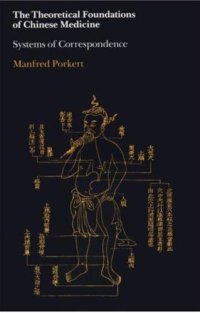
Ebook: Theoretical Foundations of Chinese Medicine: Systems of Correspondence
Author: Manfred Porkert
- Series: Asian Science Series: No. 3
- Year: 1985
- Publisher: The MIT Press
- Edition: 5
- Language: English
- pdf
Although in the United States the scientific value of acupuncture is only now being clinically evaluated for the first time, needling is only one of a number of therapeutic disciplines which have proved effective in China for over two thousand years and which today provide common remedies for more than one quarter of the world's population. Why, asks Dr. Porkert, shouldn't medical men everywhere have access to the premises and results of this medical knowledge?
In this book he presents a coherent and systematic account of Chinese theories—the system of correspondence that underlies all of Chinese medicine—using a new and precise Latin terminology (with English equivalents provided for most terms) that he devised over the past decade. The book is based directly and exclusively on Chinese sources, including recent Chinese secondary literature.
Chapter 1 introduces the concepts that are the foundation of the system of correspondences—the polar combination yin-yang, which provides a basis for the analysis of all phenomena into complementary groups, and wu-hsing, which Dr. Porkert calls the "Five Evolutive Phases," and which are used to resolve cyclic processes into five temporally and qualitatively distinct parts. In Chapter 2 he takes up concepts which relate the body to the cosmos under the title "Phase Energetics" (yün-ch'i); these define meteorological, climatic, and immunological factors in health and disease. Chapters 3 and 4 focus on systems of concepts concerned with the body itself. The author has named these systems orbisiconography, sinarteriology, and foraminology. Orbisiconography (tsang-hsiang), the "imagery of functional orbs," describes the relationships of the functional systems within the body. It is not, as Dr. Porkert points out, analogous to but the opposite of Western comparative anatomy. Sinarteriology, the study of energetic conduits (ching-luo), and foraminology, the study of sensitive points (shu-hsüeh), indicate the functional relationships manifested at the body's surface as well as within it. The book's systematic description of these disciplines involved in acupuncture is a powerful antidote to basic misconceptions prevalent in earlier Western writing on the subject.
This is Volume III in the MIT East Asian Science series, edited by Nathan Sivin.
In this book he presents a coherent and systematic account of Chinese theories—the system of correspondence that underlies all of Chinese medicine—using a new and precise Latin terminology (with English equivalents provided for most terms) that he devised over the past decade. The book is based directly and exclusively on Chinese sources, including recent Chinese secondary literature.
Chapter 1 introduces the concepts that are the foundation of the system of correspondences—the polar combination yin-yang, which provides a basis for the analysis of all phenomena into complementary groups, and wu-hsing, which Dr. Porkert calls the "Five Evolutive Phases," and which are used to resolve cyclic processes into five temporally and qualitatively distinct parts. In Chapter 2 he takes up concepts which relate the body to the cosmos under the title "Phase Energetics" (yün-ch'i); these define meteorological, climatic, and immunological factors in health and disease. Chapters 3 and 4 focus on systems of concepts concerned with the body itself. The author has named these systems orbisiconography, sinarteriology, and foraminology. Orbisiconography (tsang-hsiang), the "imagery of functional orbs," describes the relationships of the functional systems within the body. It is not, as Dr. Porkert points out, analogous to but the opposite of Western comparative anatomy. Sinarteriology, the study of energetic conduits (ching-luo), and foraminology, the study of sensitive points (shu-hsüeh), indicate the functional relationships manifested at the body's surface as well as within it. The book's systematic description of these disciplines involved in acupuncture is a powerful antidote to basic misconceptions prevalent in earlier Western writing on the subject.
This is Volume III in the MIT East Asian Science series, edited by Nathan Sivin.
Download the book Theoretical Foundations of Chinese Medicine: Systems of Correspondence for free or read online
Continue reading on any device:

Last viewed books
Related books
{related-news}
Comments (0)